Jeep Avenger vs Volvo EC40 – Differences & prices compared
Compare performance, boot capacity, efficiency and price at a glance.
Find out which car is the better choice for you – Jeep Avenger or Volvo EC40?
Costs and Efficiency:
When it comes to price and running costs, the biggest differences usually appear. This is often where you see which car fits your budget better in the long run.
Jeep Avenger has a significantly advantage in terms of price – it starts at 21900 £, while the Volvo EC40 costs 46600 £. That’s a price difference of around 24678 £.
In terms of energy consumption, the advantage goes to the Jeep Avenger: with 15.50 kWh per 100 km, it’s hardly perceptible more efficient than the Volvo EC40 with 16.20 kWh. That’s a difference of about 0.70 kWh.
As for range, the Volvo EC40 performs noticeable better – achieving up to 584 km, about 184 km more than the Jeep Avenger.
Engine and Performance:
Power, torque and acceleration are the classic benchmarks for car enthusiasts – and here, some clear differences start to show.
When it comes to engine power, the Volvo EC40 has a decisively edge – offering 442 HP compared to 156 HP. That’s roughly 286 HP more horsepower.
In acceleration from 0 to 100 km/h, the Volvo EC40 is decisively quicker – completing the sprint in 4.60 s, while the Jeep Avenger takes 9 s. That’s about 4.40 s faster.
In terms of top speed, the Jeep Avenger performs minimal better – reaching 194 km/h, while the Volvo EC40 tops out at 180 km/h. The difference is around 14 km/h.
There’s also a difference in torque: Volvo EC40 pulls clearly stronger with 670 Nm compared to 260 Nm. That’s about 410 Nm difference.
Space and Everyday Use:
Cabin size, boot volume and payload all play a role in everyday practicality. Here, comfort and flexibility make the difference.
Both vehicles offer seating for 5 people.
In curb weight, Jeep Avenger is clearly lighter – 1180 kg compared to 2065 kg. The difference is around 885 kg.
In terms of boot space, the Volvo EC40 offers minimal more room – 404 L compared to 380 L. That’s a difference of about 24 L.
In maximum load capacity, the Jeep Avenger performs barely noticeable better – up to 1277 L, which is about 81 L more than the Volvo EC40.
When it comes to payload, Jeep Avenger a bit takes the win – 502 kg compared to 435 kg. That’s a difference of about 67 kg.
Who wins the race?
The Volvo EC40 proves to be wins the duel decisively and therefore becomes our DriveDuel Champion!
Volvo EC40 is the better all-rounder in this comparison.
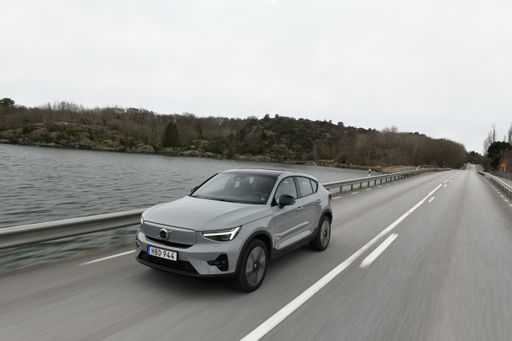
Volvo EC40
Jeep Avenger
The Jeep Avenger is a compact SUV that brings a blend of rugged design and modern technology, making it ideal for both urban and off-road adventures. Its robust build and distinctive styling capture Jeep's iconic spirit while offering a comfortable and refined driving experience. With advanced safety features and a versatile interior, the Avenger caters to a wide range of drivers looking for practicality and excitement.
details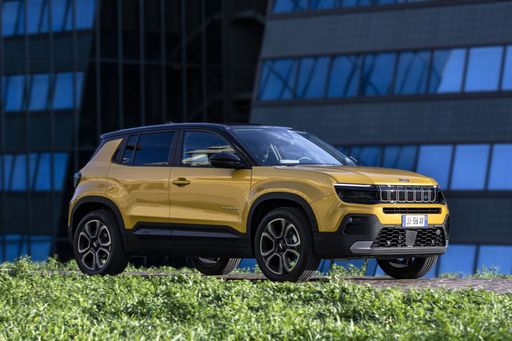 @ Stellantis
@ Stellantis
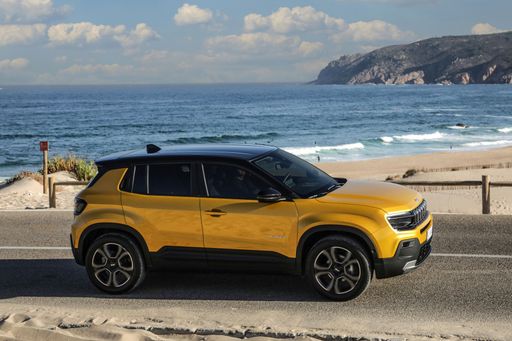 @ Stellantis
@ Stellantis
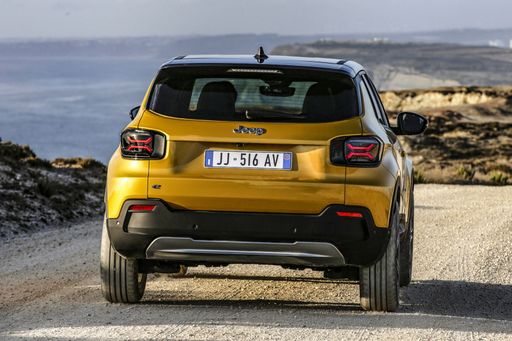 @ Stellantis
@ Stellantis
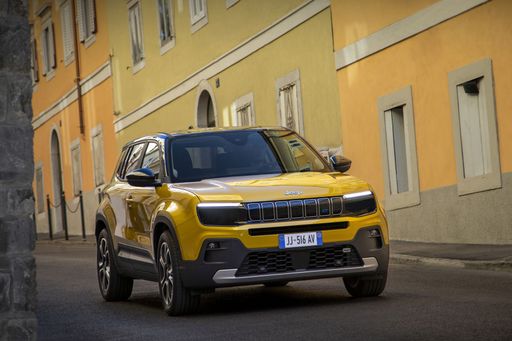 @ Stellantis
@ Stellantis
 @ Stellantis
@ Stellantis
Volvo EC40
The Volvo EC40 seamlessly combines cutting-edge technology with sleek Scandinavian design, offering a refined driving experience. With its advanced safety features and user-friendly infotainment system, this model caters to both seasoned drivers and modern tech enthusiasts. The vehicle's impressive efficiency and environmentally conscious engineering make it a standout choice for those seeking sustainability without compromising on style.
details @ media.volvocars.com
@ media.volvocars.com

|

|
|
|
|
Costs and Consumption |
|
|---|---|
|
Price
21900 - 36900 £
|
Price
46600 - 59000 £
|
|
Consumption L/100km
4.9 - 5.7 L
|
Consumption L/100km
-
|
|
Consumption kWh/100km
15.50 kWh
|
Consumption kWh/100km
16.2 - 17.3 kWh
|
|
Electric Range
400 km
|
Electric Range
488 - 584 km
|
|
Battery Capacity
51 kWh
|
Battery Capacity
67 - 79 kWh
|
|
co2
0 - 129 g/km
|
co2
0 g/km
|
|
Fuel tank capacity
44 L
|
Fuel tank capacity
-
|
Dimensions and Body |
|
|---|---|
|
Body Type
SUV
|
Body Type
SUV
|
|
Seats
5
|
Seats
5
|
|
Doors
5
|
Doors
5
|
|
Curb weight
1180 - 1520 kg
|
Curb weight
2065 - 2185 kg
|
|
Trunk capacity
325 - 380 L
|
Trunk capacity
404 L
|
|
Length
4084 - 4088 mm
|
Length
4440 mm
|
|
Width
1776 mm
|
Width
1873 mm
|
|
Height
1527 - 1541 mm
|
Height
1591 mm
|
|
Max trunk capacity
1218 - 1277 L
|
Max trunk capacity
1196 L
|
|
Payload
494 - 502 kg
|
Payload
395 - 435 kg
|
Engine and Performance |
|
|---|---|
|
Engine Type
Electric, Petrol, Petrol MHEV
|
Engine Type
Electric
|
|
Transmission
Automatic, Manuel
|
Transmission
Automatic
|
|
Transmission Detail
Reduction Gearbox, Manual Gearbox, Dual-Clutch Automatic
|
Transmission Detail
Reduction Gearbox
|
|
Drive Type
Front-Wheel Drive, All-Wheel Drive
|
Drive Type
Rear-Wheel Drive, All-Wheel Drive
|
|
Power HP
100 - 156 HP
|
Power HP
238 - 442 HP
|
|
Acceleration 0-100km/h
9 - 10.6 s
|
Acceleration 0-100km/h
4.6 - 7.3 s
|
|
Max Speed
150 - 194 km/h
|
Max Speed
180 km/h
|
|
Torque
205 - 260 Nm
|
Torque
420 - 670 Nm
|
|
Number of Cylinders
3
|
Number of Cylinders
-
|
|
Power kW
74 - 115 kW
|
Power kW
175 - 325 kW
|
|
Engine capacity
1199 cm3
|
Engine capacity
-
|
General |
|
|---|---|
|
Model Year
2023 - 2025
|
Model Year
2024
|
|
CO2 Efficiency Class
A, D, C
|
CO2 Efficiency Class
A
|
|
Brand
Jeep
|
Brand
Volvo
|
What drivetrain options does the Jeep Avenger have?
Available configurations include Front-Wheel Drive or All-Wheel Drive.
The prices and data displayed are estimates based on German list prices and may vary by country. This information is not legally binding.
